Isobel Currie is is a three-dimensional embroidery artist living and working in Stockport, Greater Manchester.
Since graduating from Manchester Polytechnic in 1990, her talents with threads and fabrics have flourished, eventually leading to membership of the 62 Group of Textile Artists.
Her fascination with stitch and colour has resulted in bold geometric forms, often inspired by the shapes, patterns and rhythms found in nature.
In this interview, Isobel discusses her early influences, the on-going evolution of embroidery as an art form, and the first public exhibition of her work.
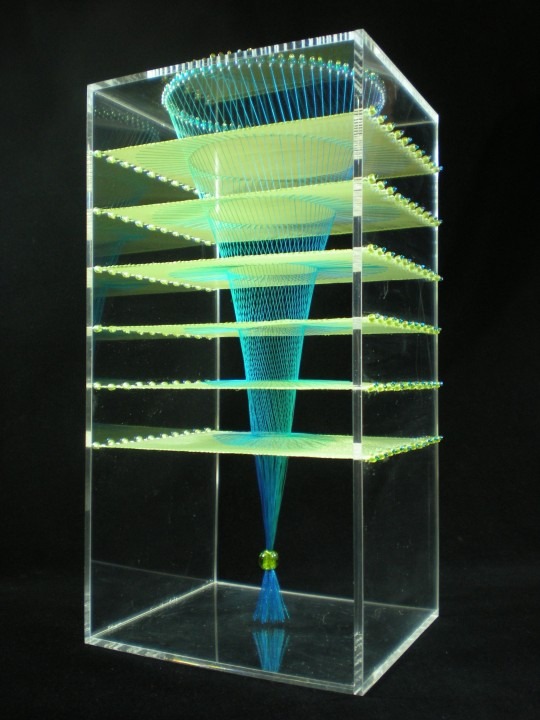
Intensity and lustre
TextileArtist.org: What initially captured your imagination about textile art?
Isobel Currie: I have always loved colour: the way colours interact, mix, graduate and complement each other; and all through my childhood I was surrounded by textiles. In my early years I discovered the rich variety and depth of colours available in fabrics and threads; I loved their intensity and their lustre, and was captivated by the creative possibilities. I have been hooked ever since. I still find it almost impossible to walk past a piece of deep ultramarine dupion silk without buying it!
What or who were your early influences and how has your life/upbringing influenced your work?
My introduction to needlework came from my family. Both my grandfathers were involved in the Manchester textile industry and my grandmother taught needlework at the Manchester Deaf School. My earliest influence was my mother, who has always sewed. As a child I always had fabric and thread to play with, and my mother taught me all of her many textile skills. I learnt to sew at the age of three, and by the age of eight I could use a sewing machine.
I found that sewing came naturally to me, and that I enjoyed it immensely. Apart from introducing me to embroidery and beginning my textile education, my mother and father also had a life-long influence on the way I approach my work. They were both creative in their spare time. My father had a focused, methodical and precise problem-solving ability, while my mother’s creativity is more imaginative and free. A combination of these two approaches shaped my early attempts at textile art and has remained a fundamental part of the way I work ever since.
A love of stitch and colour
What was your route to becoming an artist?
I have always loved embroidery. I generally have at least one project on the go, and I can’t imagine a time when I wouldn’t be stitching something. What helped me take this to a new level was my textile art education. This started with art and needlework at school and culminated in a BA (hons) in Embroidery from Manchester Polytechnic in 1990. This education gave me an in-depth understanding of the world of textile art, the techniques and materials involved and the creative process. Since 1990 my continuing exploration of embroidery has been guided by the knowledge and experiences of my education; but, as always, is focused on a love of stitch and colour.
What is your chosen medium and what are your techniques?
My aim is to explore the three-dimensional potential of embroidery stitches. Currently I am using clear acrylic shapes to create a space in which I can stitch. The threads and fabric vary from piece to piece, depending on the structural and aesthetic requirements of each particular design; but they are generally normal embroidery threads: rayons and cottons etc, and organza fabric for its translucency. The techniques I use are traditional embroidery stitches, for example: buttonhole stitch and fly stitch; however, my work involves using the entire three-dimensional form of each stitch, rather than using the more traditional two-dimensional surface pattern they create.
How would you describe your work and where do you think it fits within the sphere of contemporary art?
I would describe my work as three-dimensional embroidery. I create sculptures that explore the three-dimensional beauty of pure stitch, and the unique interaction that stitch has with fabric; revealing and celebrating the journey that the thread makes through its supporting medium. As my work is based on traditional stitch techniques, I feel it can be seen as a continuation of the traditional meticulously planned and executed embroideries of the past. However, by seeing stitches as three-dimensional shapes, rather than two-dimensional patterns, my aim is to make an innovative and modern contribution to the on-going evolution and development of embroidery as an art form. I have certainly found it to be a rich and enjoyable source of inspiration and ideas.
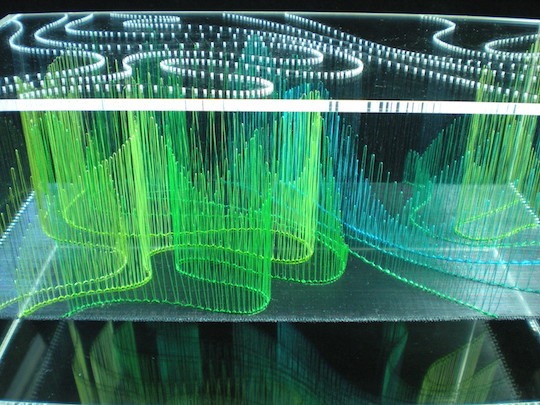
Unexpected forms and shapes
Tell us a bit about your process and what environment you like to work in?
There are three main elements to my work; a stitch, a form and colour. There is no set order in which these are decided, but generally I start with a stitch.
Whenever I have some free time I will spend it mentally pulling traditional embroidery stitches apart to see what shape they are. I note down the results, and sometimes that analysis will immediately generate ideas about the theme and structure for a piece of embroidery. The themes often reference patterns and rhythms drawn from nature, I find these particularly beautiful and inspiring.
I choose the colours carefully to ensure that they emphasise and enhance the chosen theme and structure. Having completed the overall design of a piece, every stitch needs to be planned out very accurately and in great detail before the holes can be drilled in the acrylic shape and I can start stitching. You may think that actually stitching a piece that is so thoroughly planned in advance would be relatively dull; however, there is a real joy in watching the shape and form of the piece slowly emerge as the stitches are added; the stitch work itself has always proved challenging, with issues relating to tension, access or layering to overcome; and despite the thorough planning, it is amazing and pleasing how often unexpected forms and shapes appear in the accumulating thread lines.
My work is small scale, which means I can work from home where I have a dedicated work space with very good lighting.
Do you use a sketchbook?
I do not do sketching, but have a technical notebook for working out the details of each of my designs, and also an ideas book where I make a note of possible future designs.
What currently inspires you and which other artists do you admire and why?
The stitches themselves are my inspiration.
Some artists I admire are painters Bridget Riley and Paul Klee, jeweller Wendy Ramshaw, and sculptors Alex Calder and Gabriel Dawes. Their work all includes the use of precise line, rhythm and colour, and I have always found the results beautiful.
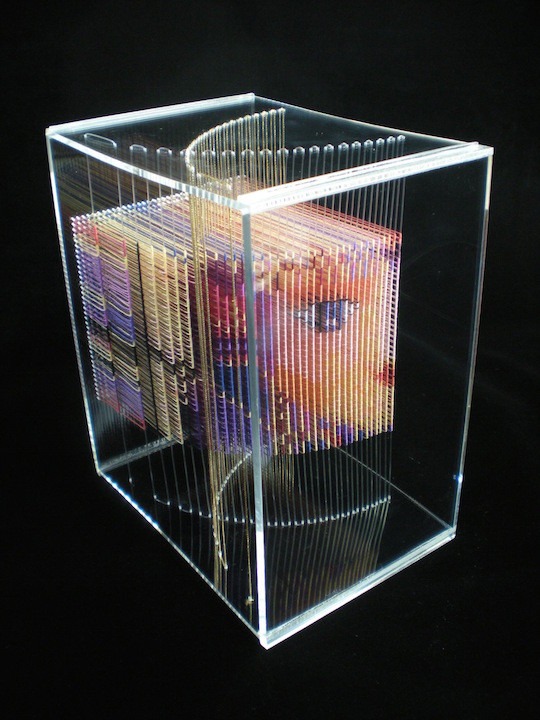
New ways of working
Tell us about a piece of work you have fond memories of and why?
Or Nué Re-imagined was a piece I made for the Embroiderers’ Guild Member’s Challenge in 2011. The brief was to respond to a piece of Or Nué gold work by Margaret Nicholson. I chose a detail from her design to use as a basis for a three-dimensional exploration of the technique of Or Nué, a form of couching.
In my design the three elements of Or Nué: the ‘fabric’, the gold couched cord, and the couching thread were separated out from each other in a pattern of intersecting curves to reveal the technique’s construction.
Working to a competition brief was a challenging and valuable experience. I explored new ways of working that I would not otherwise have done; worked successfully to a deadline, which I had not had to do for many years; and, although the result is slightly different to the rest of my work, I was happy with the finished piece. I was delighted when it won the Valerie Campbell-Harding prize for Innovation, and the President’s Cup. The fond memories I have of Or Nué Re-imagined are not just the fact that it won the competition, although that was obviously a great moment; but more importantly that it was the first time I had publicly exhibited a piece of my work. The reception my piece received made me realise that there was value in what I did, and therefore gave me the confidence to apply to the 62 Group, and to seek other ways to exhibit and promote my work. That piece was a tentative step into a wider world and in that way it will always mark a significant turning point in my life in embroidery.
How has your work developed since you began and how do you see it evolving in the future?
Each new piece presents a new set of challenges. In most cases I literally do not know how I will technically be able to achieve what I want, so I am continually learning new methods and evolving old ones. I find it very exciting to start work on a piece not knowing if it will be physically possible, or if it will look as I want it to when finished. I am also continually striving to improve the accuracy and precision of my stitch work, which presents its own challenges, but has improved the clean lines and quality of my work. There are a great many embroidery stitches providing a vast wealth of inspiration; some of which I already have ideas for and some I have yet to explore.
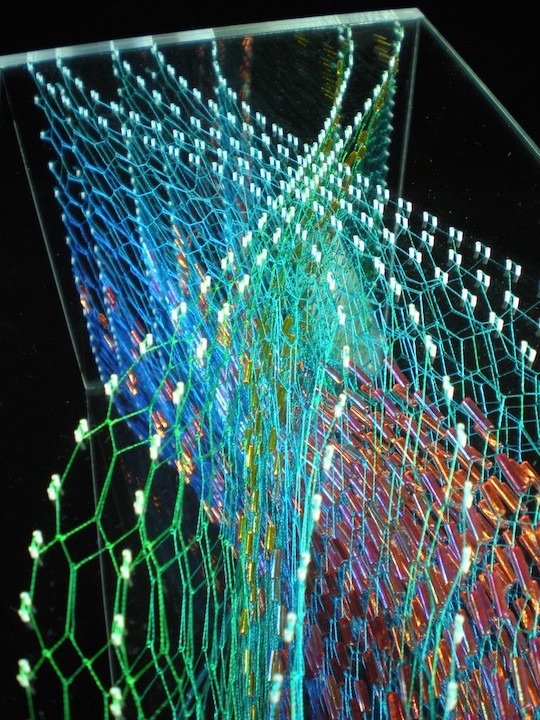
Clever and innovative design
What advice would you give to an aspiring textile artist?
Do what you enjoy, but question every aspect of it.
Can you recommend three or four books for textile artists?
The book I use for my own work is Anne Butler’s ‘Batsford Encyclopaedia of Embroidery Stitches’. This sadly is now out of print, but there are other similar books on the market.
This book shows just how many stitches there are to be inspired by, without dictating how they should be employed.
Similarly ‘Mary Thomas’s Embroidery Book’ covers the many techniques available to the embroiderer.
I have recently enjoyed reading Thomas Heatherwick’s ‘Making’, for the way he approaches each new project with a question allowing him to encapsulate the design brief, and start to explore sometimes novel solutions.
What other resources do you use?
I subscribe to ‘Embroidery’ magazine to see what is new in stitched textiles; and also to ‘Crafts’ magazine to get a broader overview of what is going on in the world of crafts. I enjoy looking at the website thisiscolossal.com for clever and innovative design.
What piece of equipment or tool could you not live without?
Because of the small scale of my work, I would not get very far without my glasses and very good lighting! I need to use very long, fine tweezers and needles to reach into areas of my work where my fingers will not fit.
Do you give talks or run workshops or classes? If so, where can readers find information about these?
I would be interested in giving talks to small groups.
How do you go about choosing where to show your work?
I am fortunate to be a member of the 62 Group of textile artists, so I can submit work to the varied locations in which the group exhibits.
Where can readers see your work this year?
At the moment I am making work to submit for the ’62 Group Now’ exhibition, which opens in Unthank, near Penrith, in March 2015. My work can also be viewed on my website and on the 62 Group website.
For more information about Isobel Currie and 62 Group, please visit www.62group.org.uk and www.isobelcurrie.com.
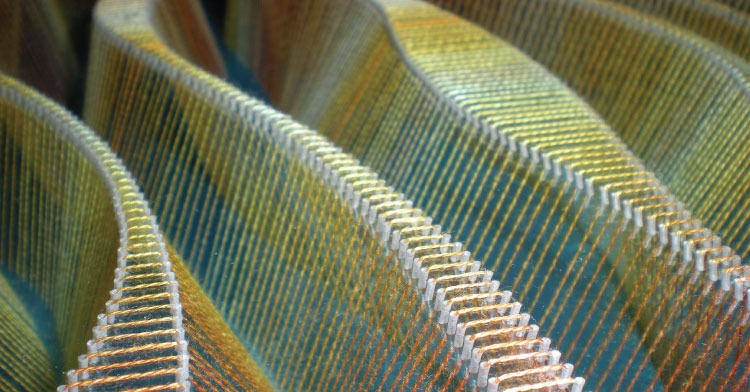
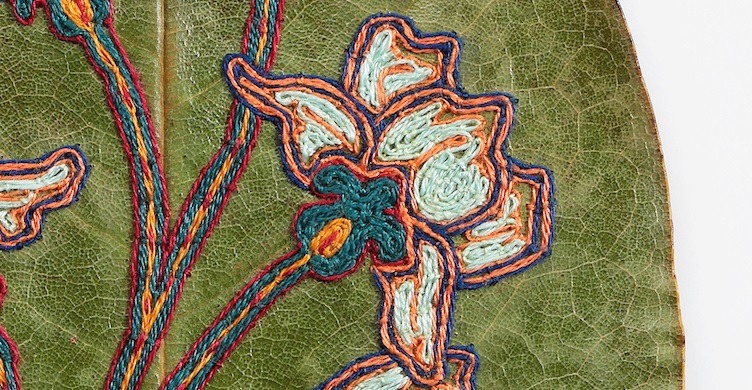
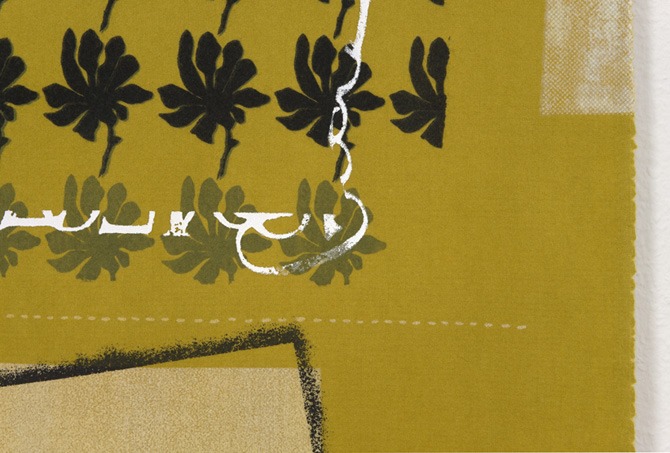
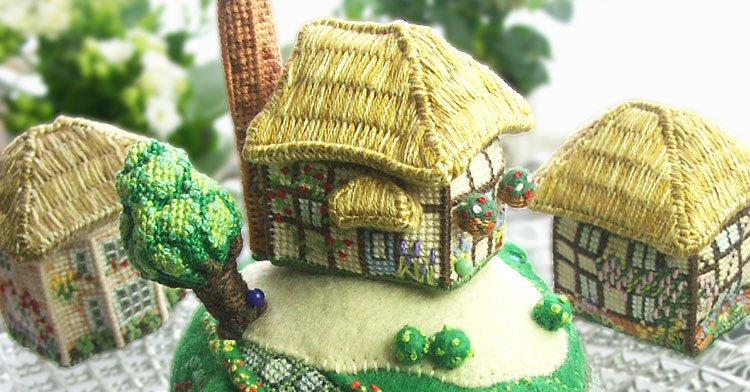
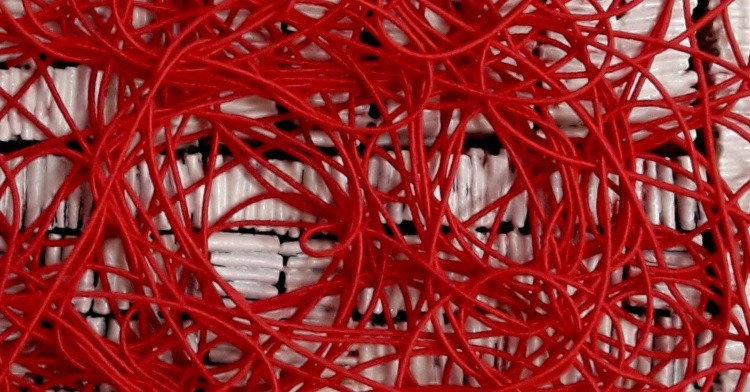

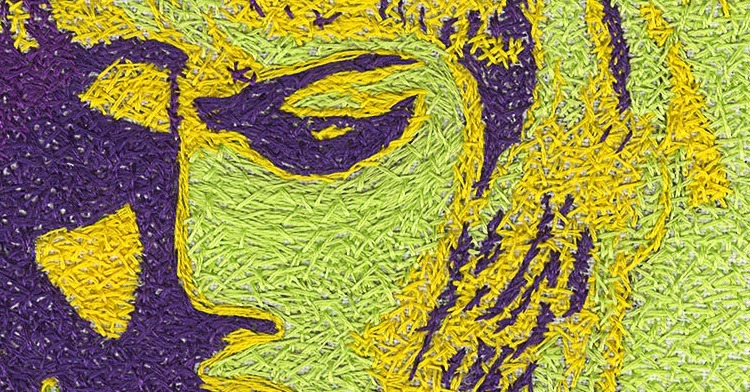

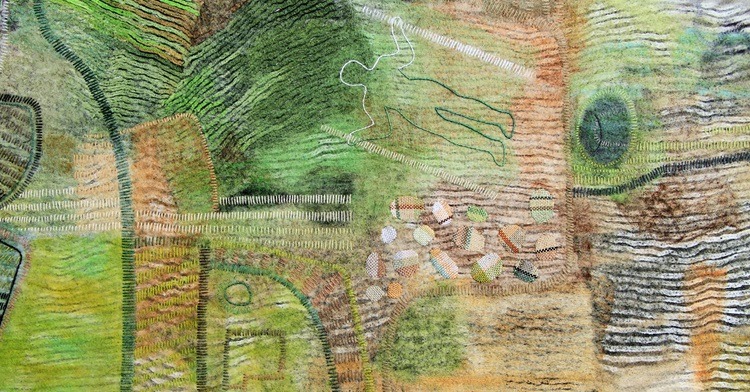
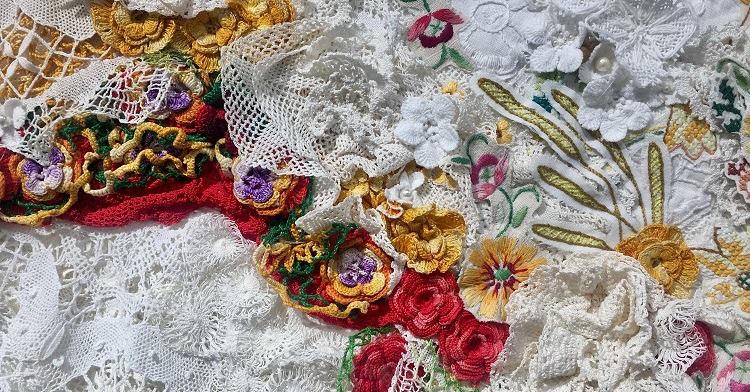
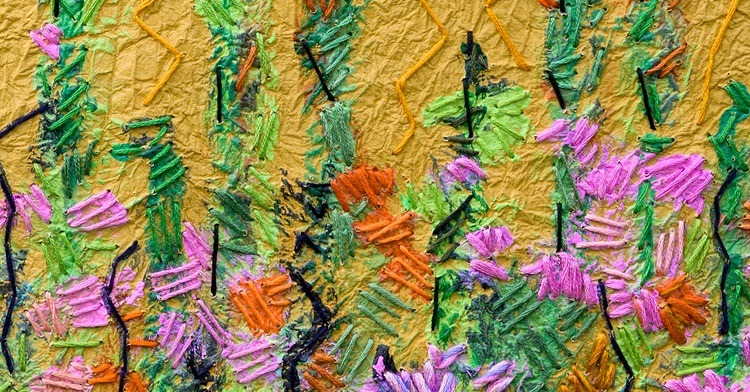
8 comments
Gail Harker
What a wonderful direction that you are taking stitch.
Suzanne Crosby
Phenomenal! Many thanks.
Elaine Alibrandi
You have an outstanding vision and sensibility. This is truly great work and refreshing to see. Congratulations!
olly
Oops I should look more carefully I have just found the sizing on each piece.
The work is small and very intricate. Even more impressed.
olly
It is mentioned a number of times that the work is small scale is it possible to give an example of measurements.
I had not seen Isabel’s work before and I am integued by it. I enjoy the shape colour and stitch.
Nigel Cheney
Hi lads, fabulous article. I was at college with Isobel back in the day. The work is breath taking! Fascinating to read the stories behind the pieces. This is such an important resource for our students here in Dublin. Thank you! N
Elisabeth Rutt
Hi Sam and Joe
I have seen Isobel’s work and find it fascinating. Thanks for a great interview that tells me more of her work and her process of investigating the structure of stitches and a little of how she makes such beautiful pieces.
Elisabeth
Cas Holmes
Hello Sam and Joe
I was with you at the early stages as one of your first interviews and it has been inspiring to watch textileartist become one of the key points of reference over the years. Another great interview.Congratulations on your first book.
Cas Holmes